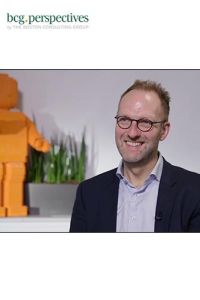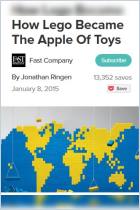Join getAbstract to access the summary!

Join getAbstract to access the summary!
Jørgen Vig Knudstorp and Grant Freeland
At Lego, Growth and Culture Are Not Kid Stuff
An Interview with Jørgen Vig Knudstorp
Boston Consulting Group, 2017
What's inside?
In 2004, Lego faced bankruptcy. Here’s how CEO Jørgen Vig Knudstorp led the turnaround.
Recommendation
Lego manufactures a timeless toy that has captured the wonder of children around the world for several generations. However, the company lost its way and almost went bankrupt in 2004. Jørgen Vig Knudstorp led Lego’s formidable turnaround. In this brief, focused conversation with Grant Freeland of the Boston Consulting Group, Knudstorp, in his final days as CEO, recaps how Lego recovered and how the corporation remains a market leader. getAbstract believes that Knudstorp’s insights will inspire students of management and organizational strategy, as well as fans of Lego.
Summary
About the Speakers
A former CEO of the Lego Group, Jørgen Vig Knudstorp led Lego out of a bankruptcy crisis. Grant Freeland is a senior partner at the Boston Consulting Group.


















Comment on this summary